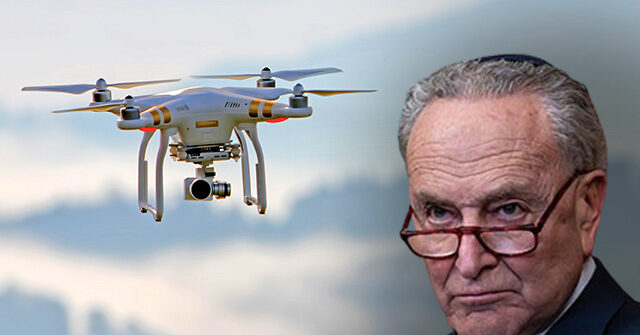Senate Majority Leader Chuck Schumer is increasingly vocal about the unaddressed drone phenomena observed extensively in New York and New Jersey. Speaking in New York City, Schumer expressed frustration over the lack of clarity and answers regarding numerous recent drone sightings, particularly in areas like Long Island and Staten Island. He raised critical questions about the existing technology that allows drones to fly undetected, stressing that similar advanced technology should exist to track and investigate these drones effectively. In his view, the government’s inability to provide answers is remarkable, especially considering the frequency of these sightings in urban areas where drone activity has become a pressing concern for local communities.
In response to these sightings, Schumer is urging the Department of Homeland Security (DHS) to take proactive measures by deploying specialized detection systems, such as the Robin technology that offers 360-degree monitoring capabilities. He believes that utilizing such systems could significantly enhance the detection of drones in the New York-New Jersey region, a step he considers essential for maintaining public safety and addressing residents’ fears. This call for action underscores Schumer’s recognition that the current investigative efforts are insufficient and that there ought to be a comprehensive strategy to understand and manage drone-related activities.
Moreover, Schumer is planning to introduce legislation aimed at providing local law enforcement agencies with enhanced tools for drone detection, which would presumably enable municipalities to respond more effectively to the ongoing drone activity. His commitment to creating a legislative solution highlights the growing bipartisan concern over drone-related issues, which extends beyond mere curiosity; it also encompasses public safety and national security implications. The legal framework for managing drone technology at the local level appears critical for fostering a coordinated response to what might be perceived as invasive and potentially hazardous surveillance.
Republican perspectives on the drone phenomena echo Schumer’s concerns. Rep. Mike Waltz, a prominent figure in national security discussions, acknowledges the apparent gaps and disconnects between various government agencies, particularly between the DHS, local law enforcement, and the Department of Defense. His commentary suggests an underlying frustration with the government’s inability to trace the source of these drones and the potential security risks they pose, especially near critical sites. The aspect of public safety raises alarms, particularly regarding sensitive locations that could be compromised by drone activity.
Waltz elaborates on the importance of enforcing regulations in no-fly zones where drone activity has been reported, particularly highlighting the proximity of sensitive state and federal sites such as military facilities and high-profile residences like that of Donald Trump in Bedminster. His concerns extend to the broader implications of these drones, suggesting that they pose not only a surveillance risk but also a potential threat to national security. The fact that these discussions are happening at both the local and national levels indicates a significant awareness that must be addressed through collaborative governmental efforts.
The discourse surrounding the drone phenomena reveals a growing urgency among legislators to confront this issue strategically. The dialogue led by Schumer, along with contributions from various political factions, illustrates a collective understanding that managing drone technology is essential for public safety. As investigations proceed and potential corrections in policy are considered, it is clear that both protection of civil liberties and innovative law enforcement strategies are necessary to adapt to the evolving landscape of aerial technology. The rising frequency of drone sightings serves as a wake-up call to lawmakers, emphasizing the need to bridge technological, governmental, and legal gaps effectively.

